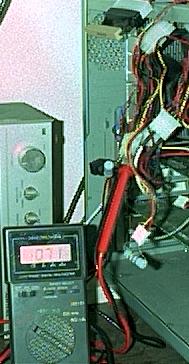
j.c.f.'s Atlhon Overclock Phase II.
Last Updated 3/27/00.
Hits since 12/4/99:








ATX 20 pin power connector Pin# Pin# ------------------------ | 3.3V 11 1* 3.3V | | -12V 12 2 3.3V | | COM 13*(Gnd) 3 COM | | PS-ON 14* 4 +5V | | COM 15 5 COM | | COM 16 6 +5V | | COM 17 7 COM | | -5V 18 8 PW-OK| | +5V 19 9 5VSB | | +5V 20 10 +12V | ------------------------


R103 R104 R106 R107 R110 R111
1/2 O X X O O X
1/3 X O O X O X
2/5 0 X O X X O